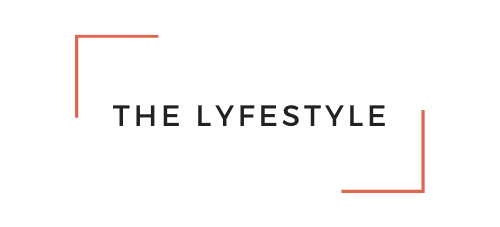Apple announced its latest generation of wearables and tablets this week, like every other September. But this year, gym junkies might be just as excited as tech fiends about what’s coming next from Cupertino.
The company unveiled a brand new service, Apple Fitness+, which looks to rule the home workout streaming landscape and cement the Apple’s place as one of the biggest names in fitness. This is a logical next step for the company, which has built the Watch, the most popular device on the market, into a potent consumer health, wellness, and fitness tool. Apple is also shifting its focus into the services space; execs announced a new bundle package, Apple One, which will give consumers the opportunity to pay a flat fee for all of company’s subscription offerings like Fitness+, Apple Music, and TV+, among others.
Apple Fitness+ will give Apple Watch owners (one of the devices, Series 3 or later, is required to use the service) a new platform for streaming studio-style workouts. While you’ll need a subscription ($9.99 per month, $79.99 per year, or $29.95 per month as part of the Premier tier of Apple One) to use Fitness+ content, the service will be accessible through the new Fitness app, which replaces the Activity app on all devices running iOS 14. Users will be able to stream the on-demand video workouts with custom curated playlists on iPhones, iPads, and Apple TV-connected devices.
There are 10 different workout styles prepped for launch: cycling, treadmill (walking and running), rowing, HIIT, strength, yoga, dance, core, and mindful cooldown. New sessions will be added to the platform on a weekly basis, in 10, 20, 30, and 45 minute durations from a wide group of trainers. A “custom recommendation engine” will give users suggestions for what to try next to help cut down on browsing time. Some workouts will require dumbbells or the specialized equipment dictated by the chosen modality (treadmill, cycling, and rowing), but most can be done sans gear. The service is explicitly targeting beginners and casual gym-goers to start, but Apple Fitness+’s wide range of offerings, price point, and the ubiquity of Apple’s devices will likely make it attractive for more experienced exercisers, too.
Sweat Smarter
Apple Fitness+’s ability to integrate biometric stats like heart rate and calories burned from the Watch directly into workouts might give it an edge over less tech-y competitors. This is the type of functionality that Apple execs believe will drive a more intelligent experience than just following a training video from YouTube. “Because your Apple Watch’s metrics show up in real-time on the screen you are working out with, it is like you are immersed into the experience,” says Apple’s senior director of fitness for Health Technologies, Jay Blahnik.

Apple Fitness+ won’t be the only platform to offer that type of feature—there are other services that use stats from wearables to customize workout content, like Fitbit Premium—but there aren’t any other fitness apps that come built-in with every iPhone and iPad running the latest OS.
What’s more, the brains behind the Fitness+ personalization are fed by the other services that write into Apple’s Health app. If you record a run using an app like Strava, for instance, your session is (likely, depending on your exact permissions) logged into that profile. When you fire up Fitness+, your suggestions will be tailored by all of the data in your profile, not only the workouts you’re streaming from the app.
Music plays a big role, too. Each workout features a curated playlist—and music is one of the categories users can select to determine their programming—which Apple Music subscribers can download and save to their libraries for non-sweat session listening (the company is quick to note that non-subscribers still get to listen during their workouts, too).
Apple’s Super Team of Trainers
Choosing the right fitness professionals to marshal the workouts for Apple Fitness+ was clearly a major point of focus. On other platforms like Peloton, communities form around enigmatic fit pros and their personas, and Apple seems to be building a group designed to connect with audiences, too. While Fitness+ won’t feature live-streamed workouts for personalized call-outs mid-session—the on-demand setup is better to serve the platform’s anticipated global audience across time zones, according to Apple—the trainers worked together to design the programming, even across modalities, and appear in each other’s classes on screen.
“We were interested in working with trainers who really wanted to be part of a team.” Blahnik says. “We think that makes the experience even more curated and even more special.” He went on to compare this group concept to a team of superheroes working together to pool their powers to accomplish greater goals.
The team is composed of some fitness trainers with large followings and brand experiences, like former Nike Master trainer Betina Gozo, and others who Apple scouted as diamonds in the rough who would appeal to a broad audience. The group ranges in age, gender, ethnicity, and background. So far, an Instagram account for the platform has shared posts for 21 trainers, and Apple says that the group will likely grow as the service gets closer to launch and beyond.
Blahnik described the profile for the ideal trainer as “not just a badass expert, but someone who invites everyone to the party in an un-intimidating way.”
The trainers faced a particular challenge as they designed the platform’s initial programming in the midst of the coronavirus pandemic. Apple didn’t share many details about exactly what went into the process, but emphasized that the work was done safely.
Competing on Apple Fitness+
The one popular fitness app feature Apple’s service won’t have is a form for collaborative or competitive live workouts. At launch, users will only be able to take classes individually—so you won’t be able to log in to the exact same cycling session as a friend for a digital face-off or obsess over everyone ahead of you on a leaderboard, like you can on other platforms.
Direct head-to-head competition functionality is not built-in, but you can challenge friends to workouts you’ve tried via activity sharing. All of your workouts go toward Apple’s activity rings and badges, too, so if your competitive streak is more general—or if you’re just trying to best yourself—you can track your progress like that, too.
There is one leaderboard-esque feature, called the Burn Bar, which is equalized by weight with everyone who has tried the same workout. You won’t see your peers’ profiles onscreen, but you will see how you measure up to the rest of the group.
Eventually, Apple could develop more specialized programming for power users, but the launch team is laser-focused on creating a broadly-appealing platform first. Regardless of the exact target user, Apple Fitness+ will have a massive built-in audience from start. The biggest tech company in the world has now turned its focus to fitness—now everyone else in the workout space is going to be forced to keep up.








